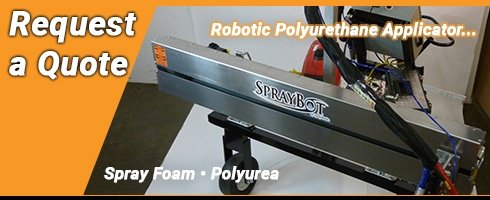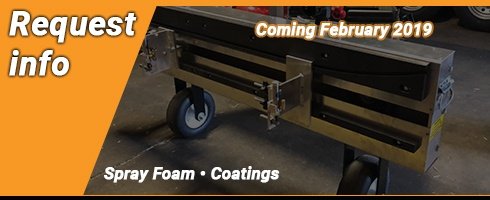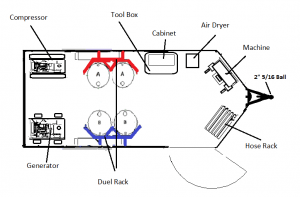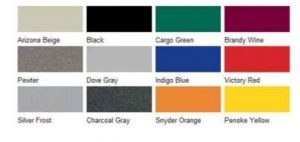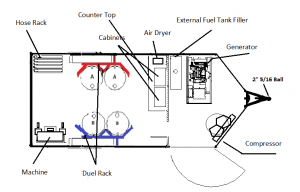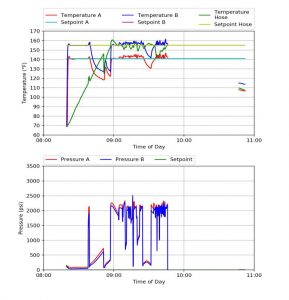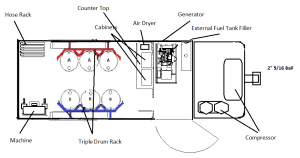Sometimes, there are things you just learn over time. Our team of experts have shared some of the trade secrets they have learned through successes and failures.
Jim Davidson
Jim Davidson is the Managing Partner at SprayWorks Equipment Group. He has 50 years of experience in the spray foam industry and has worked alongside many of the industry pioneers. Jim has designed and created industry equipment such as; Spraybot, Barrel Blazer, Roboliner and Polybot - among others.
John Davidson
John Davidson is the VP of Operations at SprayWorks Equipment Group and is an SPFA PCP Certified Roofing and Insulation Installer, Roofing and Insulation Project Manager, and Supplier Rep. With over 30 years of experience in the spray foam and polyurea industry, John brings a wealth of knowledge and hands-on experience. He has worked on commercial and residential buildings, bridges and infrastructure.
Dave Penta
Dave Penta is the VP of Sales at SprayWorks Equipment Group. For the past 30+ years, Dave has worked with multiple industries including; commercial and residential buildings, along with spray foam and coatings systems.
SPRAY GUNS
Nothing Found
It seems we can’t find what you’re looking for. Perhaps searching can help.
HOSES
Apply spray better with this trick
Spray mechanics generally prefer a product that maintains a good level of sprayability for processing. Applying or processing spray foams just on the cooler side of the temperature processing spectrum can aid in maintaining a good pattern.
Continue reading→
Service Hoses
It’s important to service hoses at least once per year. Periodic inspections assure the integrity of the protective wrap by repairing worn areas. Small, but mighty, the protective wrap is vital in protecting the hoses and electric lines. So, when hoses are rubbed or worn thin, bursting can happen. Also, when electric lines are exposed, shock hazards and hot spots are a real concern – resulting in poor heating performance and leading to failure, damages, and injury.
It seems tedious, but proper inspection and service of the hose requires removal of all protective coverings, inspection of each material, electrical and air line for slices or areas which have worn or the hose has pulled apart at the jacketing. If you see any corrosion in the fittings, a simple acid wash and wiping off excess areas with steel wool, will help. Make sure you wipe clean then apply a light film of rust inhibitive paint. Inspect all electrical connections and exposed wires, then repair as necessary to test for continuity. It’s vital to make sure connections are properly sealed from weather.
Lastly, perform a 15 minute working pressure test (confirm test pressures for specific hose) and then rewrap the hose accordingly. It seems like a lot of steps, but trust me, you’ll be glad you did it!
Watch for Crystals Forming in your Hose
When winterizing and storing hoses over an extended amount of time, be sure to clean the system thoroughly. Often, the flush and remaining isocyanate will separate over time. With the isocyanate clinging to the hose walls, fittings and various locations throughout the equipment doesn’t come out 100% with an initial flush. As a result, when the hose is put back in service, the heating required will cause expansion – dis-bonding the settled isocyanate. To help prevent this, be sure to thoroughly flush the system and follow up with a second flush within 3-4 days. This action will allow time for the remaining isocyanate to settle and be cleared with clean flush.
TRANSFER PUMPS
Nothing Found
It seems we can’t find what you’re looking for. Perhaps searching can help.
SCREENS & FILTERS
Nothing Found
It seems we can’t find what you’re looking for. Perhaps searching can help.
WEATHER
Nothing Found
It seems we can’t find what you’re looking for. Perhaps searching can help.
PROCESS & DOCUMENTATION
Nothing Found
It seems we can’t find what you’re looking for. Perhaps searching can help.

